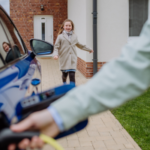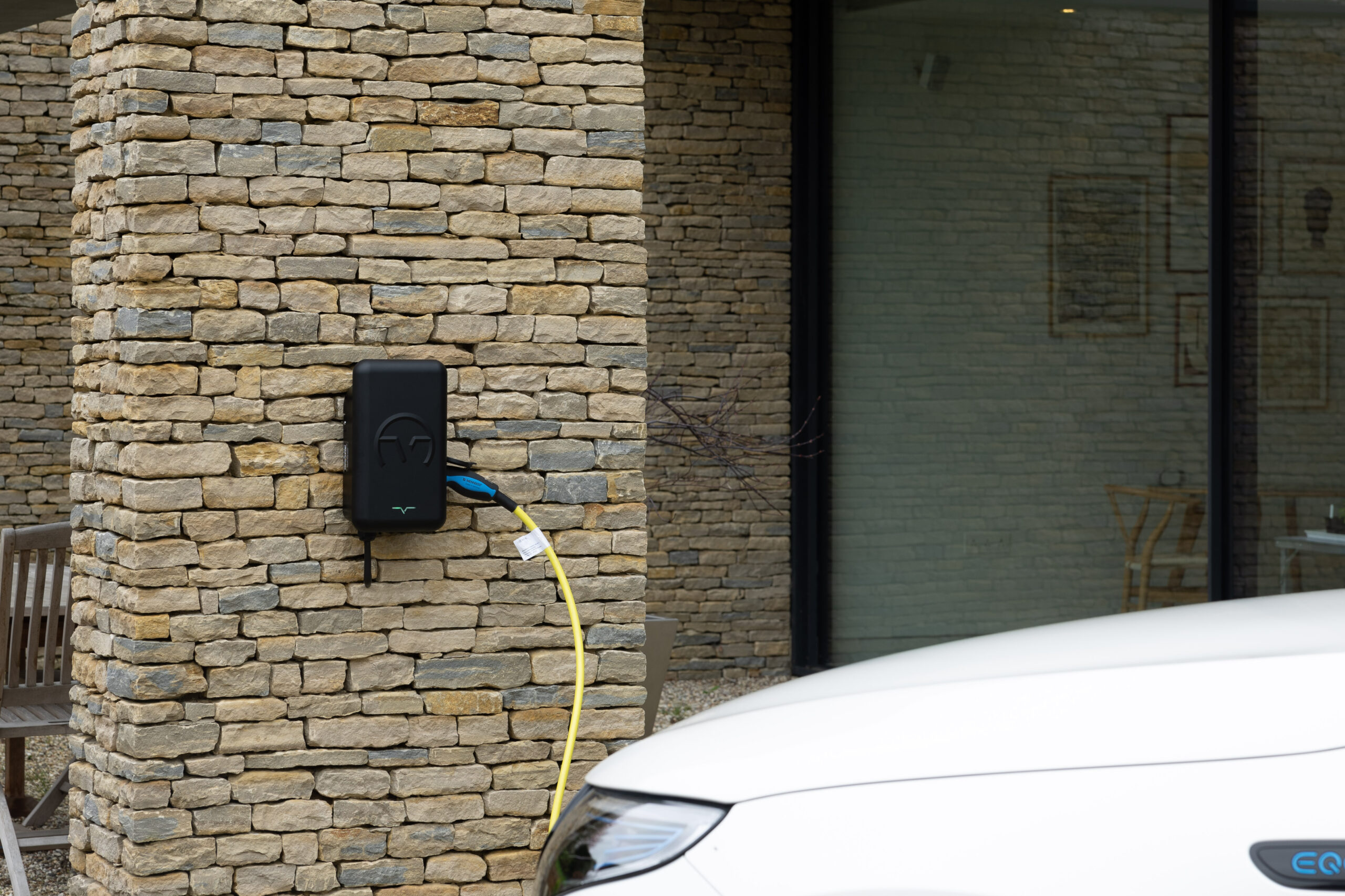
The six golden rules of EV chargepoint etiquette
30 January 2024
Preparing for an EV Charger installation – what you need to know
27 February 2024What are EV Tariffs and How Do You Choose the Right Tariff
EV tariffs can be confusing. We get it. From figuring out how to calculate cost to knowing how to switch suppliers, securing an EV tariff can bring on one headache after another.
Plus, with so many electric car tariffs now on the market and with only a few basic comparison sites available to help you snag the best one, how do you really know you’re not squandering pennies (and pounds) every time you plug in your car?
The truth is, electric car tariffs don’t need to be that confusing.
But to choose the right tariff for your circumstances, there are certain considerations you need to take on board.
Don’t worry, though—we’re going to walk you through the answers to all your burning questions!
How do EV tariffs work?
Let’s start with the basics. EV tariffs are energy rates designed for owners of electric vehicles (EVs) who want to charge them using their home electricity.
If that’s you, this means you’ve likely already undertaken to have a quality EV charger installed in your home. (Of course, you can still use the EV charger that came with your car, though they tend to be a heck of a lot slower at charging, often needing a full day to juice up an empty battery).
Regardless, the point here is that you’re seeking an EV-specific electricity tariff to help you keep your car on the road while reducing your bill at home.
Different Available EV Tariffs
Typically, there are three different types of EV tariffs.
Two-Rate Tariff
The most common is the two-rate tariff, which is based on separate day and night-time usage, with much lower rates at night.
Just to be clear, this is rarely a bill separate from all other household electricity usage. So, you can load up on laundry, run the dishwasher, charge all family devices, and plug in your car during these late-night hours!
After all, it’s your bill—you might as well save as much as you can on overall electricity consumption!
Dynamic Tariff
Dynamic tariffs offer a more flexible approach to both suppliers and end-users.
For starters, this kind of tariff enables energy suppliers to adjust the price based on changes in operating conditions. In other words, the provider can react to high electricity or energy production costs, increasing charging prices accordingly.
On the flipside, it also allows EV owners with an eye on the market to save big during periods of low demand.
A quick aside: Dynamic tariffs are not widely available in the UK right now.
Octopus is currently the only supplier providing a dynamic time-of-use (TOU) offer to consumers through its Agile Octopus tariff.
The good news, though, is that Powerverse app users are one of the few who can access it, thanks to our recent integration with this tariff.
Single-Rate Tariff
Finally, there’s the simple single-rate tariff, where you pay the same flat rate whether it’s day or night.
With this tariff, electric car owners are often given a discounted rate. Nonetheless, the single-rate tariff isn’t as common nor as popular with plug-in car lovers.
Will my electricity bill go up?
Crucial question: Will my electricity bill go up?
Short answer: Yes.
Slightly longer answer: Yes, but you will make savings elsewhere. And using an EV home charger is a lot less expensive than using a fast or rapid charger at one of the many public electric car charging stations.
Remember, when you’re using a public EV charger, no matter where it is, you’re paying for operating costs, maintenance fees, and 20 per cent VAT rather than the 5 per cent tax rate when you use domestic electricity. (yeah—ouch!)
Of course, EV models with large batteries may take longer to charge at home but an electric car still costs much less to run than a regular petrol or diesel vehicle.
A Transport and Environment (T&E) analysis of household electricity prices in EU capitals showed that even with rising energy costs, the cost to charge an electric car at home was 80 per cent cheaper than refuelling a traditional petrol-sucking car at the pump.
Add to that the fact that EVs require less maintenance than cars with oily engines, and the lifetime payout of running an electric car ends up being much less than that of a conventionally fuelled vehicle.
[advert]
How do you calculate home charging costs?
Time to put your GCSE maths to the test! To calculate the cost of charging an EV at home, multiply the size of the car’s battery pack by the electricity price of the supplier per kilowatt-hour (kWh).
So, for example, let’s say your car has a 50kWh battery pack. Multiply that figure by your supplier’s kWh rate, which in this instance we’ll say is 40p, and the grand total of charging your car from empty battery to full would be £20.00.
However, now that you know how to estimate the cost of charging your electric car at home, it’s important to choose the EV tariff that can make sure those costs don’t start to soar.
Considerations when choosing an EV tariff
There are several energy suppliers in the UK offering what might seem like fabulous EV tariff deals. But the one variable you need to keep in mind when choosing the right tariff for you is, well, you!
So, ask yourself what your exact needs are, taking into account anyone else who lives in your home too. Some questions might include:
- How much mileage are you likely to cover? This will help you figure out how much electricity your EV will use. Generally, the higher your mileage, the better your savings.
- How much energy do you use during the peak period? If opting for the two-rate tariff, check that your energy usage during the daytime peak period won’t undermine any savings you’re making at night. For example, is there someone at home during the day who’ll need to have the electric heating turned up?
- How possible will it be for you to use your electric car charger at night? Similarly, if you’ll be switching between day and night charging, you’ll need to ensure the costs for EV charging using daily normal electricity aren’t too steep.
- How easy will it be for you to switch suppliers? If you decide to change your supplier, make sure you won’t be left with a hefty early exit fee from your current electricity provider.
- How green do you want to go? One of the main reasons for buying an electric car and getting an EV charger installed in your home is to cut carbon emissions and help the environment. So check out whether the electricity from your supplier comes from solar or wind power. Also, thumb through suppliers’ environmental incentives or “green deals”, such as a renewable energy promise, to ensure they’re as green as they seem.
How do I switch to an EV tariff?
Once you’ve done your homework and found the EV tariff that’s right for you, you might need to switch energy suppliers.
Some EV tariffs will only be available to the supplier’s current customers, so you’ll need to sign up for their regular energy tariff and then shift over to their EV deal when possible.
It’s a good idea to check out beforehand how long you’ll have to wait before you can make this sideways step; if it’s too long, it might be better to choose the next best EV tariff provider instead.
Once you’ve signed up with a supplier, you’ll need to get a smart meter installed.
This is different from your EV charger installation, and it allows your supplier to track your usage and—most importantly for you—ensure they’re billing you the right amount.
The smart meter is free to install, and it’ll help you keep on top of your energy usage.
Last Words
Don’t let yourself become bamboozled by the different EV tariffs out there.
If you stand back, study the offers, and ultimately make the decision based on your own circumstances and preferences, you’ll find an EV energy tariff that’ll work best for you—and save you money.
And you can always turn to Powerverse. Our advanced app is powered by Raya, your smart energy assistant. She uses data-driven AI to suggest the best energy tariff for you based on your goals, removing the time you need to do this—and the stress of doing it.
You can find out more about Raya here.
If you’re thinking about installing an EV home charger, the Powerverse EV chargers offer simple, smart solutions that help you reduce your energy bills—and your carbon footprint.
Our home car chargers are approved by the Office for Zero Emission Vehicles and come with a three-year warranty. Find out more here.
About Powerverse
We’re industry experts in home energy management. Our easy-to-use app is built for your future electric home. It will effortlessly sync your solar, battery, heat pump, EV charger and more, helping you cut costs and your carbon footprint on your way to becoming energy-independent. Curious to know more? Talk to one of our experts.

